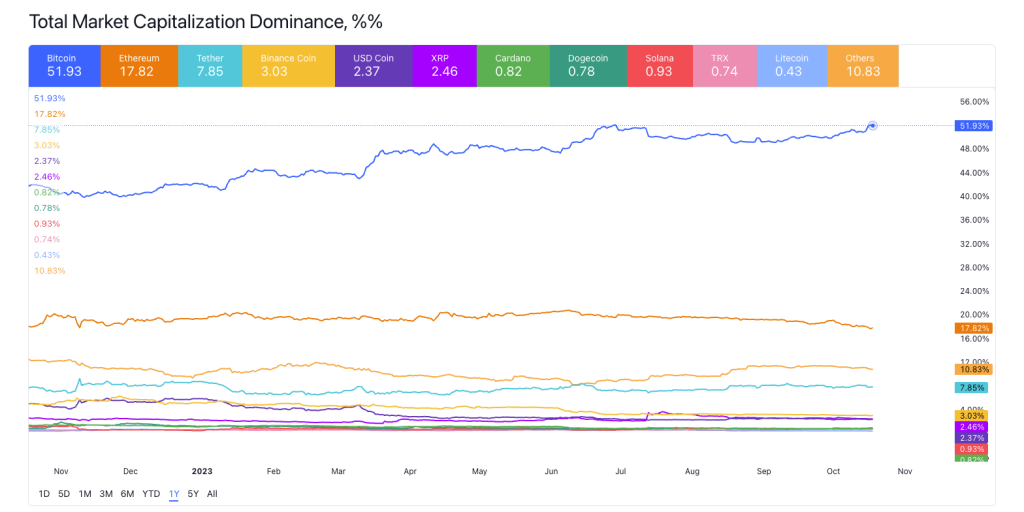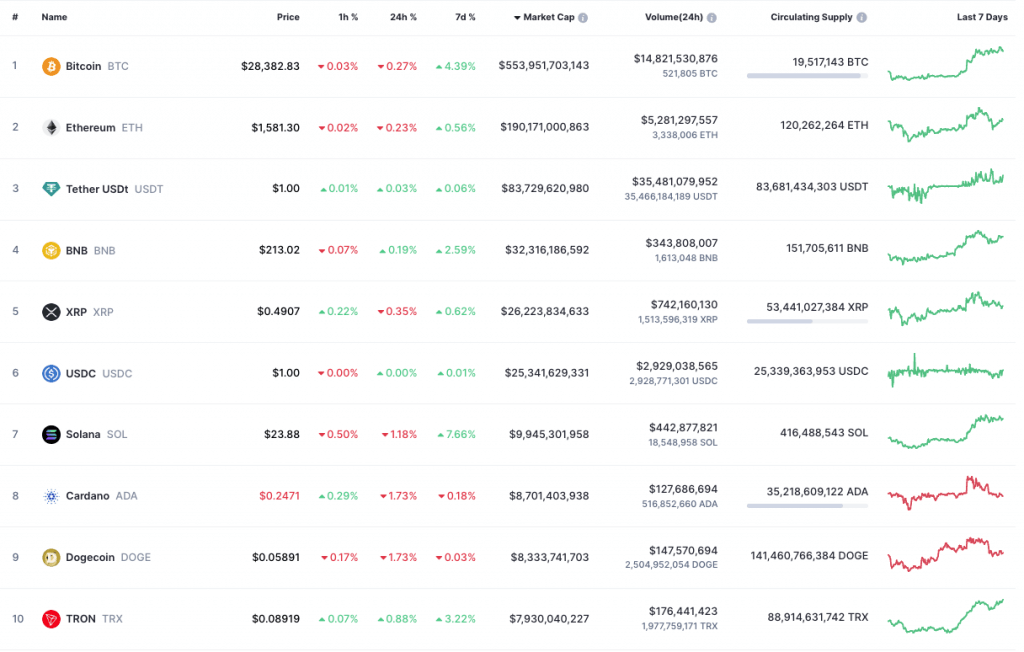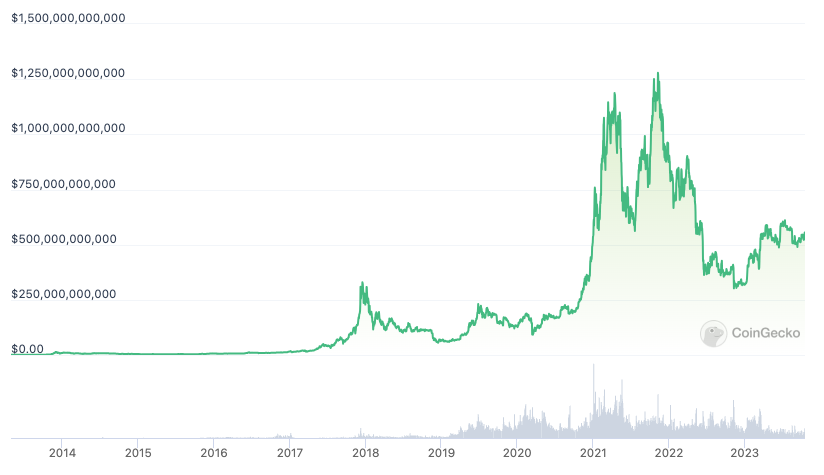What is a Market Cap in Crypto? A Guide to Market Capitalization

Cryptocurrency market capitalization, commonly known as a market cap, is a fundamental metric when analyzing the worth and significance of a digital asset. However, while the term might sound complex, its concept is straightforward. So what exactly is it, and why is it so crucial? Let’s dive in.
Understanding Market Capitalization
At its core, market capitalization provides a snapshot of the total value of a particular asset in the market. Whether you’re assessing a company’s worth in the stock market or analyzing a cryptocurrency, the formula remains consistent:
Market Cap = Current Price of an Asset x Total Number of Assets in Circulation
In the context of cryptocurrencies, this translates to:
Market Cap of a Cryptocurrency = Current Price of the Coin x Total Circulating Supply
Let’s illustrate with a hypothetical example. If there’s a cryptocurrency named “CryptoCoin” trading at €10 and there are 1 million CryptoCoins in circulation, the market cap for CryptoCoin would be:
€10 x 1,000,000 = €10,000,000
This means that the market cap for CryptoCoin is €10 million.
Why is Market Cap Important?
- Stability Indicator: A higher market cap often indicates a coin that has been more widely adopted, generally considered more stable and mature.
- Risk Assessment: Traders and investors use it to assess the risk and reward ratio. Typically, cryptocurrencies with a larger market cap might be seen as less risky than those with smaller caps.
- Liquidity Indicator: Higher market cap coins typically offer better liquidity, making it easier to buy or sell.
- Trend Analysis: Observing changes in market cap over time can provide insights into potential price movements and the overall health of the market.
Market Cap in Crypto
While the basic formula is straightforward, understanding market cap in crypto comes with its nuances.
Circulating vs. Total Supply
Not all tokens are available for trade. Some might be locked, reserved, or not yet released. Thus, we usually consider the circulating supply for market cap, not the total supply.
Market Cap Dominance
This metric shows the dominance or influence of a particular cryptocurrency over the entire market. For example, as of October 18th, 2023, Bitcoin holds a dominance of around 52%, meaning it makes up 52% of the entire crypto market cap (Tradingview).

Volume and Market Cap
It’s essential to consider the trading volume in conjunction with market cap. A high market cap with low trading volume might indicate limited liquidity, making it harder to buy or sell without affecting the price.
Market Cap Categories
In the crypto space, you’ll often hear terms like “Large Cap,” “Mid Cap,” and “Small Cap.” These distinctions are based on their market capitalization:
- Large-Cap: Cryptocurrencies with a market cap above $10 billion. For example, Bitcoin (BTC), Ethereum (ETH), Tether (USDT), and USDC. They are considered more stable.
- Mid-Cap: Cryptocurrencies with a market cap between $1 billion and $10 billion. For example, Dogecoin (DOGE), Cardano (ADA), Litecoin (LTC), and Polygon (MATIC). They are riskier than large caps, but can offer more upside potential.
- Small-Cap: Cryptocurrencies with a market cap below $1 billion. For example, Immutable X (IMX), Axie Infinity (AXS), and Aave (AAVE). They can be more volatile and higher risk, but also present an opportunity for high reward.

The Risks of Relying Solely on Market Cap
While market cap is undeniably an important metric, using it as the sole criteria for investment decisions can be misleading. Here’s why:
- Market Volatility: Cryptocurrency prices and their market caps can shift rapidly.
- Price Manipulation: Smaller-cap cryptos can be more susceptible to price manipulation.
- Overlooking Other Important Factors: Focusing solely on market cap might overlook other vital factors like the project’s technological solutions, adoption rate, and competition.
Common Misconceptions About Market Capitalization
- Market Cap vs Inherent Value: One common misconception is equating market cap with its value. The market cap reflects the market’s perception, not necessarily the asset’s value. For instance, a mid-cap cryptocurrency might lack robust fundamentals, posing long-term risks.
- How Can Market Cap Fluctuate? Cryptocurrency market cap is influenced by token price, market dynamics, and sentiment shifts – making it move upward or downward.

Is Higher Market Capitalization Better? Depends. While it might indicate maturity, and stability, it may also suggest limited growth potential.
Monitoring Market Cap
Staying updated with market cap fluctuations is made easy with various platforms, such as:
Final Thoughts
Market capitalization is a vital tool for crypto enthusiasts, traders, and investors. However, it should complement other research tools and not be the sole determinant in decision-making. Ensure you have a comprehensive understanding of the crypto space, keeping in mind that the volatile nature of cryptocurrencies means market caps can change rapidly. As always, it’s essential to do your research and consult with financial professionals before making any investment decisions. This guide is just for informative and educational purposes.
Start Your Crypto Journey with SwapinBuy
Ready to dive into the world of crypto? To get started, you can easily buy Bitcoin, Ethereum, or USDT cryptocurrency with Euros using your bank account with SwapinBuy.
Not sure how? Read our step-by-step guide on how to buy Bitcoin and other cryptocurrencies.
The cryptocurrency market is dynamic and subject to rapid changes. Stay informed by subscribing to our weekly industry updates newsletter on LinkedIn here, and joining our community on Telegram here.








